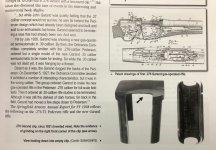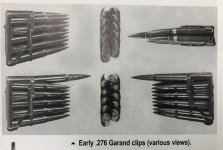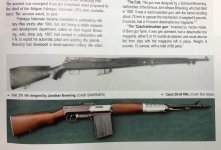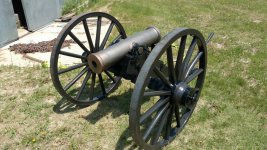The bottom line for me is who the fuck, specifically, is standing in the way of progress?
We rarely put people who are passionate and invested in specific skill sets and systems expertise into long-term jobs where that’s all they cover-down on. Instead, officers and senior NCOs will spend maybe 2 years with a program, then move on to something entirely different.
A lot of the program officers just came from a staff position that is unrelated. Before that, they did a command or Company-level XO slot. All of a sudden, they get orders to go work at one of the many fragmented centers for weapons development or proponency, whether it be Natick Army Soldier Systems Center, ARDEC, Picatinny Arsenal, Fort Benning, or the Pentagon.
Instead of finding a dedicated gun guy who has Scout Sniper Platoon experience for a sniper system as an example, it will often be some random officer whose branch manager put him into the system looking for the next ever-changing formula for what’s best for his career path.
He shows up to the new assignment, which has usually had several years of RDT&E on it already, and the outgoing OIC will brief him on what they’ve been doing, why, and what the current program schedule is. His duties and responsibilities related to budget, signature authority over inventory and personnel, and other administrative issues will be laid out, and the ball will be handed to him.
He will spend the next 6-12 months just trying to get a handle on the program while the subordinates continue on with what they were doing. There is often travel to industry conferences like AUSA, SOFEX, and SHOT Show where they will meet with vendors looking to find existing capabilities that can be tweaked to meet the program requirements.
Testing and soldier feedback studies will be conducted and documented following extensive protocols that generations of prior program managers from other commands have outlined and added upon. A primary driving force for the OIC will be to get his Officer Evaluation Report bullets rated favorably by his rater, who is overseeing multiple programs with other systems and subordinate officers managing their respective projects. 18-23 months flies by fast, terminal leave comes along with all kinds of use/lose days he’s accumulated chasing paper, and then he’s gone.
One of the things I’ve seen from these types of officers is that in place of comprehensive understanding of a system or concept, they will latch onto one aspect of the program that stood out to them when they tried to wrap their head around it. Given a total lack of relevant background, whatever they latch onto will be a distraction and deviant focal point from the core program intent. This often rises from problems that have been identified by the prior testing, in an area that needs to be fixed or improved because of an arbitrary or marginal need, but not really a game-changer. That’s how you end up with M-14s after WWII, forward assist on the M16A1 (1967), elevation wheels on M16A2 rear sights with heavy fore end barrel profiles and 3-round burst (1982), alternate magazine feed capability for the SAW, top handguards for the M240, and modular handguns.
In contrast, “the DoD entity” takes highly-experienced NCOs, Warrant Officers, and officers with extensive technical and operational backgrounds in
skill sets they love and are good at, gives them pretty wide left and right limits with a generous budget, and tells them to take the ball and run as fast and far as they can with it to provide actual practical solutions for their organization. Often times, they are chasing capabilities they recognized and outlined themselves from doing the job personally for the past 10-18 years.
That’s how you get sections of Weaver rail bolted onto free-float handguards, which evolved into KAC rails and the MRE, Schmidt & Bender Short Dot LPVOs that changed the game for magnified optics on carbines, .260 Rem SR-25s, and now 6mm ARC DM rifles.
Meanwhile big Army thinks a steel upper receiver Hk 7.62 NATO rifle is a DMR, while working on a .270 Weatherby Magnum performance wunderwaffen, and Joe is still humping a 17lb SAW in 5.56 NATO that uses a Kalashnikov operating system. But we have SIG 9mm handguns that don’t make a hill of beans difference in the big picture compared to the M9. Success!
It all comes down to being terrible at identifying and managing talent. There is this odd fixation with moving people around to get as many different assignments as possible, rather than making them really good in a few areas of expertise.







